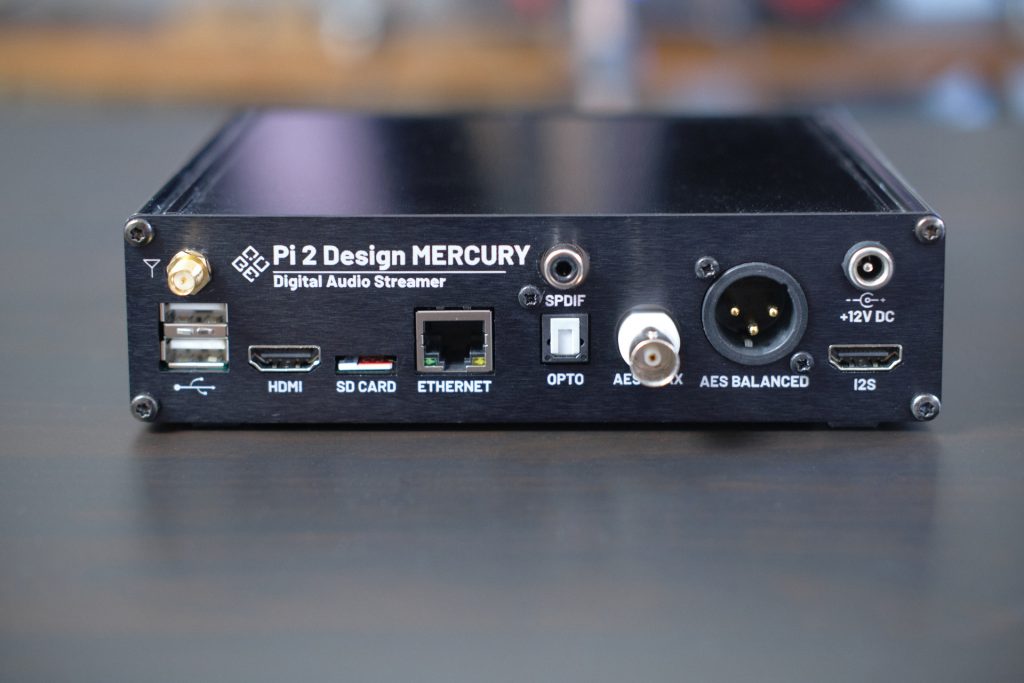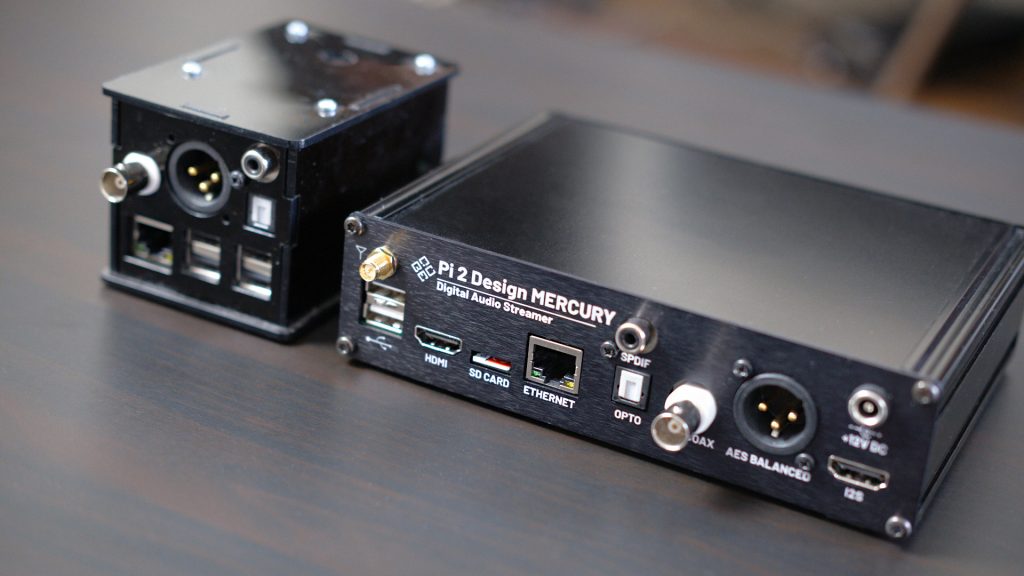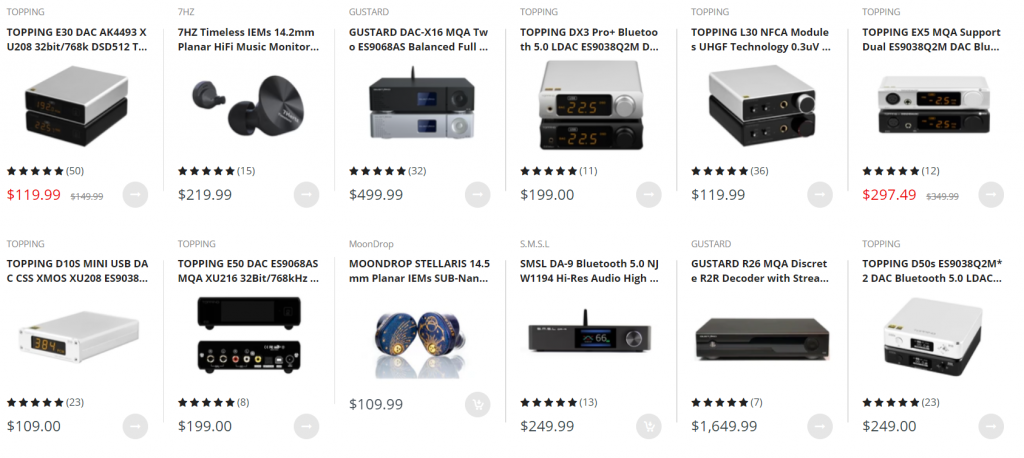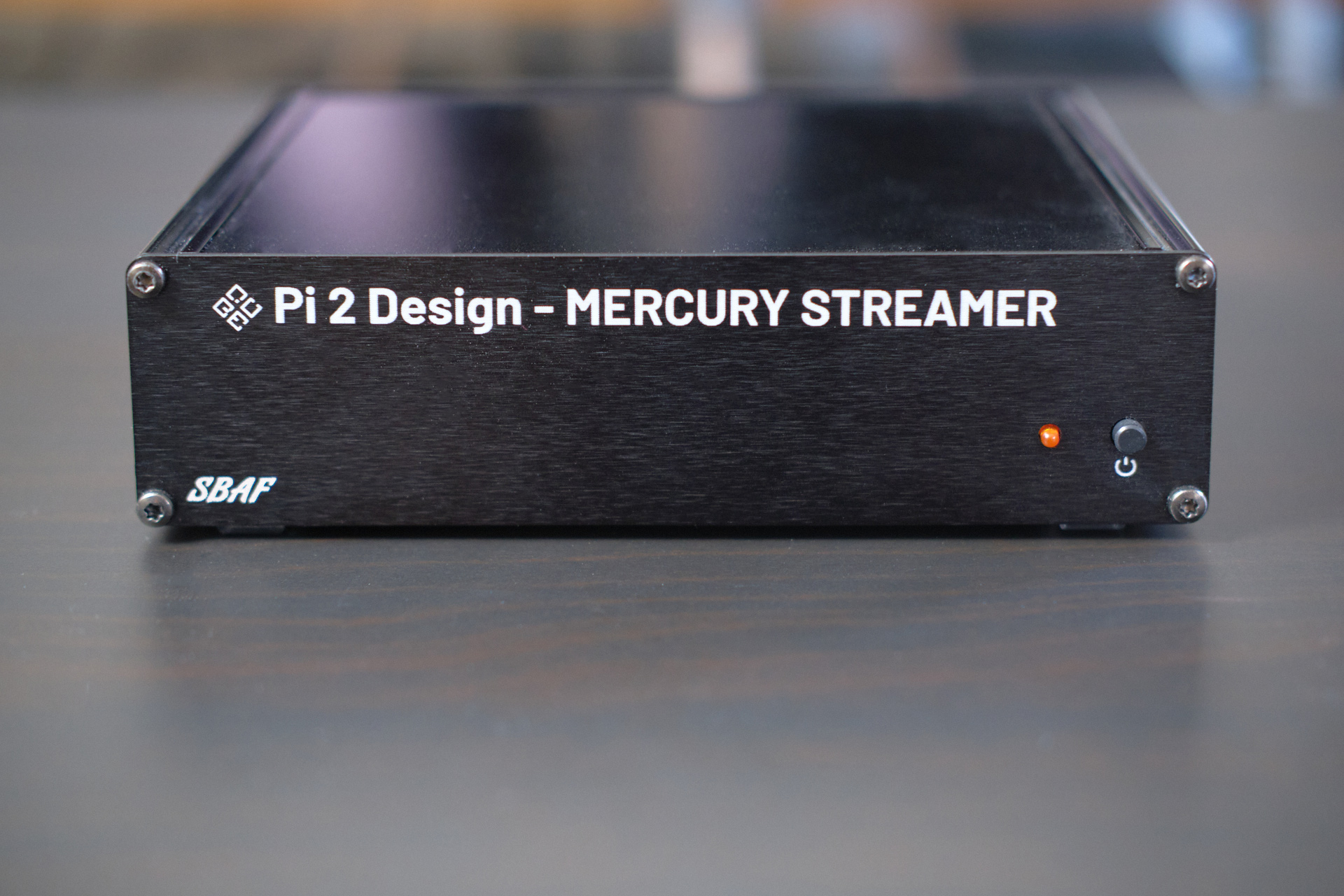NOTE: In this review, the first version of Mercury Streamer was used, the current version is Mercury V2 which offers some visual changes and a more versatile I2S output. Everything else is the same.
NOTE 2: Final scores in this review were changed on 13th July to reflect the current situation on the market. Orignal final score was higher at 8.9.
Pi2Design is a fairly new brand that has already established itself in the audio streaming market with its previous Pi2AES streamer, and Mercury which we’re looking into today is a natural evolution. It also comes with a hefty price increase so let’s find out what’s that about, and of course, is it worth it.
Build
The first thing to notice here is that Mercury is not a simple Raspberry Pi HAT (extension board) that’s thrown on top of R-Pi and into a plastic shell. This time, Pi2Design designed the whole device from scratch. Instead of using the whole R-Pi board, only the computing module is used. Everything else, like the power supply, inputs, and o outputs, etc. is developed anew. The casing is made of aluminium this time. It’s fairly thin and not something that commands a premium feel, but it’s nonetheless a clear upgrade from the previous plastic solution. So that DIY vibe of the Pi2AES is gone and Mercury looks like a finished, ready-to-use, product. But look and feel is definitely not the only thing that changed.


Connectivity
Looking in the back, we find a rich selection of inputs and outputs. To start with inputs, there are USB ports, an Ethernet port, a WiFi antenna, and an SD card slot. The last one, the SD card, is not used for storage but for storing your OS, but more on that in the next section. For now, an important thing to mention is something we can’t see on the back and that’s an M.2 socket inside the Mercury. Thanks to this, you can add an SSD storage of up to 512 GB capacity. If that’s too small for you, you can always add an external drive using USB, or simply grant Mercury access to your network storage.
Moving to outputs, both Coaxial and Optical SPDIF are on board, then we have AES BNC, AES XLR, and finally I2S over HDMI. So as you might have noticed, almost every digital output you could ever wish for is included. That said, you can use USB to output the signal too but given that USB out is not conditioned the way other outs are (galvanically isolated, reclocked, etc.) it would defeat the purpose of getting this audiophile-grade streamer. Also, I2S pinout is not adjustable in this version of Mercury, instead, it uses the most common PS Audio pinout. That’s improved in the revised Mercury V2 by giving users more control over this.
Features
When it comes to features and what kind of streaming services are supported, that will completely depend on the operating system you decide to install on your Mercury. Freedom of choice is the same as it was with Pi2AES on this matter. Unlike Pi2AES, you can order Mercury with the OS of your choice that will come preinstalled and ready to go, so you don’t have to deal with any of that by yourself.
Covering all possibilities would be too big of a task in this review, but you can find out more about how to use R-Pi as a streamer in this tutorial (Mercury is based on R-Pi module so it’s the same). That said, I’m currently set on RoPieeeXL OS which enables me to connect my phone to a Raspberry Pi using UPnP protocol. The controlling app on the phone can be Bubble UPnP or Mconnect. Both of these can play local files as well as stream from high-quality online services such are Tidal and Qobuz. Spotify app can connect to the streamer also, and so can your PC if you use the appropriate player with UPnP capability.
Some other popular options would be Volumio or Mood, which are both more feature-packed and include their own integrated players. I still prefer RoPieeeXL for its simplicity, stability, and sound quality. I tend to leave mine powered on for months and it doesn’t need any sort of additional attention, it simply works.
Sound
If you’re thinking that the digital can’t possibly influence the sound quality of the HiFi system feel free to skip this section. Without getting into how and why I stand firmly on the side that says otherwise. Digital source does make a difference and in a resolving system, it’s not a negligible one either. To cut a long story short, music streamed from Mercury sounds considerably better than the one played directly from my general-purpose PC. Just like was the case with Pi2AES, every tone is audibly cleaner and more focused, while the space between individual tones is more obvious. The background is darker too and the sense of soundstage depth is much more pronounced. Spend some time listening to the music through Mercury and then go back to the PC, and you’ll probably feel that every note just got swollen to some extent. Bassline feels slower and more bloated, while all instruments sound more diffused and less defined. Further listening reveals that after tone is much more easily observed over the Mercury. Notes such as guitar string pluck linger longer and you hear them decay slowly and more gradually. Reverbs and spatial cues are recovered with ease, and when combined with the background darkness this creates a very convincing soundstage.
Now if you’re wondering, I did try using a linear power supply instead of a factory-supplied SMPS. Yes, using a low noise power supply does increase perceived sound fidelity even more. iFi Power X brought small uplift in clarity and calmness, and Allo Shanti did the same to an even greater extent. In case you’re thinking I must be mistaken because Shanti is a 5V PS, while Mercury is declared to need 12V – you’re right. Still, I was curious to try if it would work and it did.
Comparisons
Pi2Design Pi2AES – Now if you maybe noticed that the big chunk of the sound section was copy-pasted from the Pi2AES review, it was. That’s simply because these two sound almost the same. Mercury, for some reason, feels like having just a touch more clarity overall. Tones are slightly more focused and edges are cleaner, I could spot that in direct comparison, but they’re not far apart really. So what about the price difference, I hear you ask. It mostly boils down to different builds, features, and unfortunately inflation that happened in between.

iFi Zen Stream – Another great-sounding streamer. This one is a real overachiever when it comes to the sound quality too. While Mercuty might still have a small upper hand in terms of sheer clarity, Zen Stream punches back with a calmer and slightly more natural presentation. In reality, you’ll struggle to differentiate them, and using different power supplies brings bigger sonic differences than streamers themselves.
Feature sets between these two are quite different. Zen Stream has a better build and USB out. Mercury has more outputs in general and greater OS versatility. With some of these OSes, Mercury is also much more stable and less finicky than Zen Stream. Mercury offers that M.2 socket too, but it comes at twice the price… so I say choose according to your needs and wants.
Conclusion
Pi2Design Mercury is another mighty good-sounding streamer. It’s a solid upgrade over Pi2AES when it comes to features, build, and look. It throws just a little bit extra sonic quality into the mix too, which probably makes it the best-sounding streamer under one thousand dollars that I’ve personally heard. It might not have the luxurious feel of some alternatives but if a feature-rich and sonically capable audio streamer is what you need then look no further.






